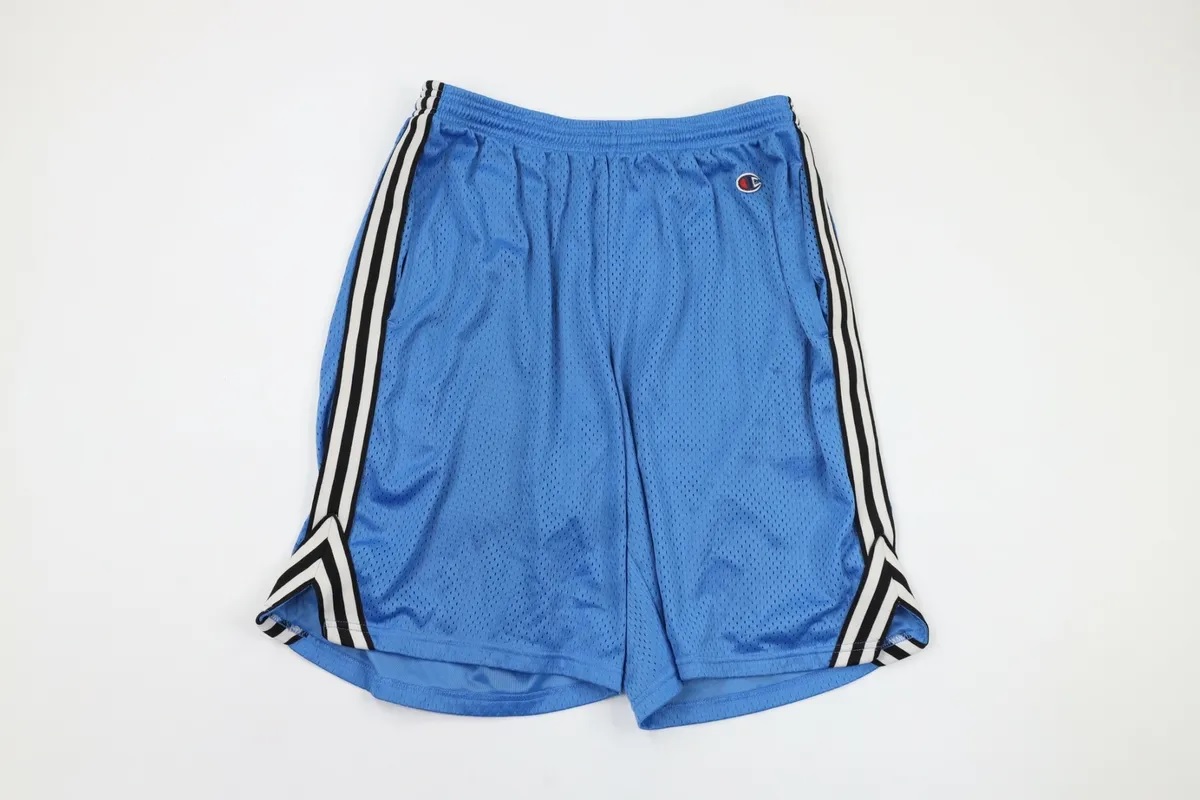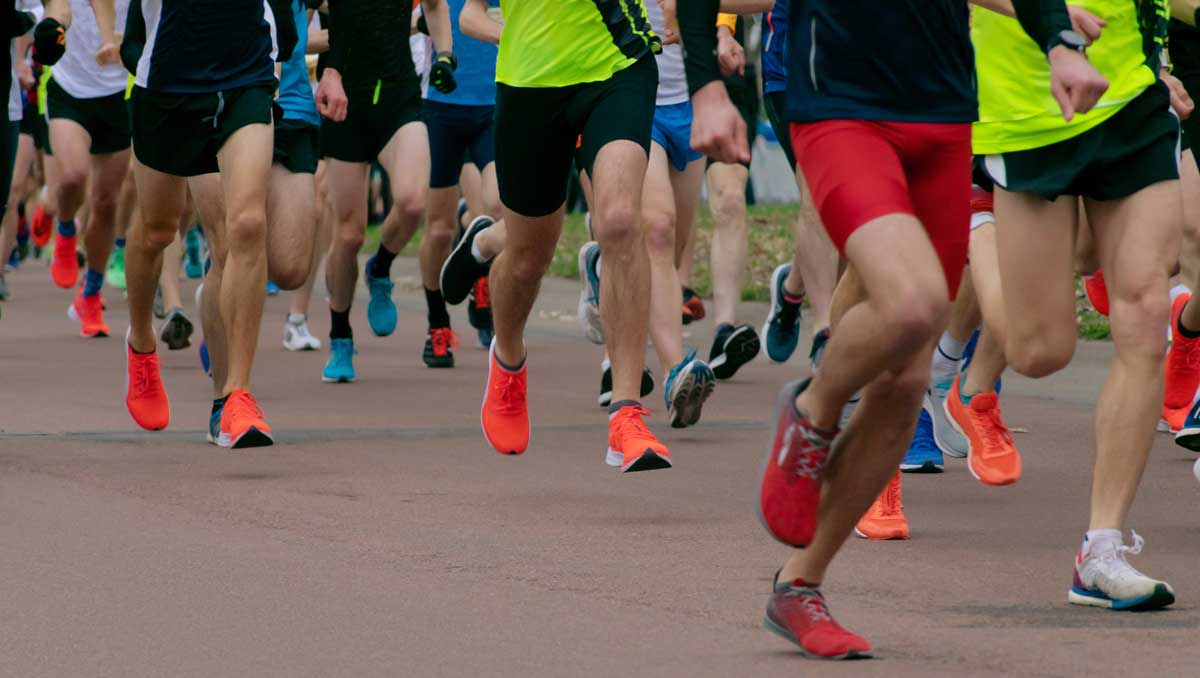Home>Misc>Featured>Why Do I Get Stretch Marks When I Workout


Featured
Why Do I Get Stretch Marks When I Workout
Published: August 12, 2023
Learn why you might develop stretch marks while exercising and discover ways to prevent and treat them. Featured advice for fitness enthusiasts.
Introduction
Welcome to the world of fitness, where muscles are built, endurance is tested, and sweat is shed. While working out has numerous benefits for our overall health and well-being, it can sometimes come with unintended side effects, such as stretch marks. You may be wondering, “Why do I get stretch marks when I workout?” In this article, we will explore the causes of stretch marks, the connection between working out and stretch marks, and how you can prevent and treat them.
Stretch marks, scientifically known as striae, are a common skin condition that affects both men and women. They typically appear as thin, discolored lines on the skin, often with a slightly textured or indented appearance. Stretch marks occur when the skin is stretched beyond its natural capacity, causing the collagen and elastin fibers to rupture, leading to the formation of these marks.
There are various factors that can contribute to the development of stretch marks, including rapid weight gain or loss, hormonal changes, and genetics. When it comes to working out, the intensity and frequency of your workouts can also play a role in the appearance of stretch marks.
The main connection between working out and stretch marks lies in the changes that occur in our bodies during exercise. As we push our muscles to their limits, we stimulate muscle growth and development. This process is known as muscle hypertrophy. However, the rapid increase in muscle size can cause the overlying skin to stretch, potentially leading to the formation of stretch marks.
Another factor to consider is the impact of rapid weight gain or loss during workouts. When we engage in intense exercise regimens or embark on weightlifting programs, our body composition can change dramatically. This rapid change can put stress on the skin, resulting in the formation of stretch marks.
Hormonal changes are also a contributing factor. Hormones like cortisol and glucocorticoids play a role in the skin’s elasticity and collagen production. During intense workouts, our body releases these hormones, which can affect the skin’s ability to stretch and recover, thus increasing the risk of stretch marks.
Additionally, genetics can predispose some individuals to develop stretch marks more easily than others. If your parents or close relatives have had stretch marks, there is a higher likelihood that you may experience them too, even with regular workouts.
Now that we understand the potential causes of stretch marks and the connection between working out and stretch marks, it’s essential to explore prevention strategies and effective treatments to minimize their appearance. In the next sections, we will discuss how you can prevent stretch marks during workouts and the available treatments if they do occur.
What are Stretch Marks?
Stretch marks, scientifically known as striae, are a common skin condition that affects both men and women. They are characterized by thin, discolored lines that appear on the skin, often with a slightly textured or indented appearance. Stretch marks occur when the skin is stretched beyond its natural capacity due to various factors such as rapid weight gain or loss, hormonal changes, and genetic predisposition.
When our skin stretches, the collagen and elastin fibers that provide strength and elasticity can become damaged or disrupted. This can lead to the formation of stretch marks, which initially appear as reddish or purplish marks. Over time, these marks may gradually fade to a lighter, silvery color.
Stretch marks commonly occur on areas of the body where there is significant stretching or expansion, such as the abdomen, thighs, hips, breasts, and upper arms. They can also develop on the lower back, buttocks, and calves. While they are usually harmless from a medical perspective, many individuals are self-conscious about their appearance and may seek methods to prevent or minimize their visibility.
Pregnancy is one of the most common times when stretch marks occur. As the fetus grows inside the womb, the abdomen expands rapidly, causing the skin to stretch and potentially leading to stretch marks. Similarly, adolescents experiencing growth spurts may also develop stretch marks as their bodies go through rapid changes.
Weight fluctuations, both gain and loss, can contribute to the development of stretch marks. When we gain weight rapidly, the skin may not have enough time to adapt to the increased volume, leading to the formation of stretch marks. On the other hand, significant weight loss can cause the skin to lose its elasticity, resulting in the appearance of stretch marks.
Hormonal changes also play a role in the occurrence of stretch marks. During puberty, the body undergoes hormonal shifts that can affect the skin’s elasticity and collagen production. Additionally, hormonal imbalances, such as those associated with certain medical conditions or the use of corticosteroid medications, can increase the likelihood of developing stretch marks.
Genetics also play a role in determining an individual’s susceptibility to stretch marks. If your parents or close relatives have had stretch marks, there is a higher likelihood that you may experience them as well. Certain skin types may be more prone to stretch mark formation, as the skin’s natural elasticity varies from person to person.
It is important to note that while stretch marks cannot be completely eliminated, their appearance can be minimized through various prevention strategies and effective treatments. In the following sections, we will explore how to prevent stretch marks during workouts and discuss potential treatments if they do occur.
Causes of Stretch Marks
Stretch marks, scientifically known as striae, can occur due to a variety of factors. Understanding the causes of stretch marks can help us better prevent and treat them. Here are some of the main causes:
Rapid weight gain or loss: One of the most common causes of stretch marks is rapid changes in body weight. When the skin stretches too quickly, such as during pregnancy or significant weight gain, the collagen and elastin fibers in the skin can become damaged, leading to the appearance of stretch marks. Similarly, rapid weight loss can also cause the skin to lose its elasticity, resulting in stretch marks.
Hormonal changes: Hormonal fluctuations, such as those that occur during puberty, pregnancy, or certain medical conditions, can contribute to the development of stretch marks. Hormones like cortisol and glucocorticoids can affect the skin’s elasticity and collagen production, making it more susceptible to stretch marks.
Genetics: Your genetics can play a role in determining whether or not you are prone to developing stretch marks. If your parents or close relatives have had stretch marks, there is a higher likelihood that you may experience them as well. Certain skin types may be more susceptible to stretch mark formation due to differences in skin elasticity and collagen production.
Puberty and growth spurts: Adolescents experiencing growth spurts may develop stretch marks as their bodies go through rapid changes. The sudden stretching of the skin during these periods of rapid growth can lead to the formation of stretch marks on various parts of the body.
Prolonged use of corticosteroid medications: Certain medications, such as corticosteroids, can affect the skin’s ability to stretch and recover. Prolonged use of these medications can increase the risk of developing stretch marks.
Underlying medical conditions: Certain medical conditions, such as Cushing’s syndrome and Marfan syndrome, can increase the chance of developing stretch marks. These conditions are characterized by hormonal imbalances or alterations in connective tissue structure, making the skin more susceptible to stretching and subsequent stretch mark formation.
It is important to note that while these are the common causes of stretch marks, individual experiences may vary. If you are concerned about the appearance of stretch marks or want to reduce their visibility, it is always a good idea to consult with a healthcare professional or dermatologist. They can provide personalized advice and recommend suitable prevention strategies or treatment options.
The Connection Between Workout and Stretch Marks
When it comes to workouts, you may be wondering about the connection between exercise and stretch marks. While physical activity is crucial for improving fitness levels and overall health, it can sometimes contribute to the development of stretch marks. Let’s take a closer look at this connection.
Increased Muscle Mass and Stretch Marks: One of the main reasons why workouts are associated with stretch marks is the increase in muscle mass. As you engage in strength training or resistance exercises, such as weightlifting, your muscles undergo a process called muscle hypertrophy. This process involves the enlargement of muscle fibers, leading to an increase in muscle size and strength. However, this rapid growth can put stress on the skin and underlying connective tissues, potentially resulting in the formation of stretch marks.
Rapid Weight Gain or Loss and Stretch Marks: Workouts that involve significant changes in body weight can also contribute to the appearance of stretch marks. For example, individuals participating in bodybuilding programs may aim to gain muscle mass along with a corresponding increase in body weight. The rapid weight gain, combined with the stretching of the skin, can lead to the development of stretch marks. Similarly, sudden weight loss can also cause the skin to lose its elasticity, resulting in the formation of stretch marks.
Hormonal Changes and Stretch Marks: Exercise stimulates the release of hormones in our bodies, such as cortisol and glucocorticoids. These hormones are vital for regulating various bodily functions, but excessive amounts can affect the skin’s elasticity and collagen production. During intense workouts, the increased production of these hormones can impair the skin’s ability to stretch and recover, making it more vulnerable to stretch marks.
Genetics and Stretch Marks: Genetics also play a role in the development of stretch marks when working out. Some individuals may be more genetically prone to developing stretch marks due to factors such as skin elasticity, collagen production, and healing capabilities. If you have a family history of stretch marks, you may be more likely to experience them, even with regular workouts.
While working out can potentially contribute to the appearance of stretch marks, it’s important to remember that they are not a reflection of your fitness level or the effectiveness of your exercise routine. Stretch marks are a natural occurrence that can happen to anyone, regardless of their physique. Therefore, it is crucial to approach fitness with a balanced mindset, focusing on overall health and well-being rather than solely on physical appearance.
In the following sections, we will explore effective strategies to prevent stretch marks during workouts and discuss available treatments if they do occur.
Increased Muscle Mass and Stretch Marks
One of the main reasons why workouts can potentially lead to the development of stretch marks is the increase in muscle mass. As you engage in strength training or resistance exercises, such as weightlifting, your muscles undergo a process called muscle hypertrophy. This process involves the enlargement of muscle fibers, resulting in an increase in muscle size and strength. However, this rapid growth can put stress on the skin and underlying connective tissues, which may lead to the formation of stretch marks.
When you consistently challenge your muscles through resistance exercises, such as lifting weights or performing bodyweight exercises, microscopic tears occur in the muscle fibers. This is a normal and necessary part of the muscle-building process. In response to these micro-tears, the body repairs and rebuilds the muscle fibers, resulting in muscle growth and increased strength.
During this process, the muscles can enlarge significantly, especially if you are following a progressive overload training program, where you gradually increase the intensity, duration, or load of your workouts over time. This increase in muscle size can stretch the overlying skin, potentially causing the collagen and elastin fibers to rupture, leading to the formation of stretch marks.
It’s important to note that not everyone who engages in strength training will develop stretch marks. Various factors, such as individual genetics, skin elasticity, and the rate of muscle growth, can influence the likelihood of stretch mark formation.
To minimize the risk of developing stretch marks when aiming to increase muscle mass, there are several strategies you can implement:
- Gradual Progression: Avoid rushing into intense training programs that may result in rapid muscle growth. Instead, focus on gradually increasing the intensity and volume of your workouts to allow your skin to adapt to the changes.
- Maintain Hydration: Proper hydration is essential for maintaining healthy skin. Drink an adequate amount of water throughout the day to ensure optimal skin hydration, which can improve skin elasticity and flexibility.
- Moisturize Regularly: Keeping your skin moisturized can help enhance its elasticity. Apply a moisturizer or body oil to the areas prone to stretch marks, such as the abdomen, thighs, and upper arms, to keep the skin hydrated and supple.
- Focus on Nutrition: Consuming a well-balanced diet rich in nutrients, particularly those that support skin health, can contribute to the overall elasticity and strength of your skin. Opt for foods high in vitamins A, C, and E, as well as zinc and collagen-boosting protein sources.
- Listen to Your Body: Pay attention to any signs of discomfort or excessive muscle growth. If you experience a sudden increase in muscle size or notice symptoms of overtraining, consider adjusting your workout routine or seeking guidance from a qualified fitness professional.
By implementing these strategies and taking care of your skin, you can minimize the risk of stretch marks when working towards increasing muscle mass. However, it’s important to remember that stretch marks are a natural part of the body’s response to changes, and they do not diminish your achievements or progress in building strength and muscle.
Rapid Weight Gain or Loss and Stretch Marks
Another factor that can contribute to the development of stretch marks is rapid weight gain or loss. When we experience significant changes in our body weight, it can put stress on the skin, potentially leading to the formation of stretch marks.
Rapid weight gain occurs when we consume more calories than our body needs, resulting in an increase in overall body weight. This often happens during periods of excessive calorie intake or when following a high-calorie diet to promote muscle growth. The sudden increase in weight can cause the skin to stretch beyond its natural capacity, leading to the formation of stretch marks.
Similarly, rapid weight loss, achieved through intense dieting or crash diets, can also cause the skin to lose its elasticity. When we lose weight quickly, such as in a short period of time, the skin may not have enough time to adapt to the reduction in volume. As a result, the skin can become stretched and lead to the formation of stretch marks.
It’s important to note that weight gain or loss doesn’t have to be extreme to cause stretch marks. Even minor fluctuations in body weight, particularly if they occur rapidly, can contribute to the development of stretch marks.
To minimize the risk of stretch marks associated with rapid weight gain or loss, consider the following strategies:
- Gradual Weight Changes: Aim for a gradual and sustainable approach to weight gain or loss. By allowing your body to adjust slowly, the skin has a better chance to adapt to the changes, reducing the likelihood of stretch marks.
- Maintain a Balanced Diet: Focus on consuming a well-balanced diet that provides all essential nutrients. Including a variety of fruits, vegetables, lean proteins, whole grains, and healthy fats can support the overall health and elasticity of your skin.
- Stay Hydrated: Proper hydration is essential for maintaining healthy skin. Drink an adequate amount of water throughout the day to keep your skin hydrated and enhance its elasticity.
- Emphasize Exercise: Incorporating regular exercise into your routine can help maintain muscle tone and improve overall skin elasticity. Strength training exercises, in particular, can support skin health by promoting muscle growth and enhancing the integrity of the skin’s underlying structures.
- Moisturize the Skin: Use a moisturizer or body oil on areas prone to stretch marks, such as the abdomen, thighs, and breasts. Keeping the skin hydrated can improve its flexibility and reduce the likelihood of stretch mark formation.
While these strategies can help minimize the risk of stretch marks associated with rapid weight gain or loss, it’s important to keep in mind that our bodies respond differently to weight changes. Some individuals may be more prone to developing stretch marks due to factors such as genetics, skin elasticity, and individual physiological responses.
If you are concerned about the appearance of stretch marks or want to reduce their visibility, consulting with a healthcare professional or dermatologist can provide personalized advice and recommend suitable prevention strategies or treatment options.
Hormonal Changes and Stretch Marks
Hormonal changes can significantly influence the occurrence of stretch marks. During certain times in life, such as puberty, pregnancy, or due to hormonal imbalances, our body experiences fluctuations in hormone levels that can impact the skin’s elasticity and collagen production. These hormonal changes can contribute to the development of stretch marks.
One of the key hormones involved in stretch mark formation is cortisol, commonly known as the stress hormone. When we experience stress or engage in intense workouts, cortisol levels in the body can increase. Elevated cortisol levels can impair the skin’s ability to stretch and recover, making it more susceptible to stretch mark formation.
In addition to cortisol, other hormones, such as glucocorticoids, can also influence the development of stretch marks. Glucocorticoids are hormones that are naturally produced by the body’s adrenal glands in response to stress. These hormones can affect the skin by reducing collagen production and impairing the skin’s elasticity.
Pregnancy is a time when hormonal changes are particularly significant. During pregnancy, the body experiences an increase in hormones like estrogen, progesterone, and corticotropin-releasing hormone (CRH), which can affect the skin’s elasticity. As the abdomen expands to accommodate the growing fetus, the skin stretches, and if the skin’s elasticity is compromised due to hormonal changes, stretch marks can form.
Similarly, hormonal changes during puberty can also contribute to the development of stretch marks. As adolescents go through growth spurts, the body experiences a surge in hormones, including growth hormone and sex hormones like estrogen and testosterone. These hormonal changes can cause rapid changes in body size and shape, leading to the stretching of the skin and the potential formation of stretch marks.
In addition to natural hormonal changes, certain medical conditions or the use of corticosteroid medications can also affect hormone levels and increase the risk of stretch marks. Conditions like Cushing’s syndrome, Marfan syndrome, and certain adrenal gland disorders can result in hormonal imbalances that impact the skin’s elasticity. Prolonged use of corticosteroids, whether as medications or creams, can also influence collagen synthesis and skin stretching.
While hormonal changes can contribute to the occurrence of stretch marks, there are steps you can take to minimize their impact:
- Manage Stress: Engage in stress-reducing activities such as meditation, yoga, or deep breathing exercises to lower cortisol levels and minimize the impact of stress on the skin.
- Maintain a Balanced Lifestyle: Adopt a well-balanced lifestyle that encompasses regular exercise, sufficient sleep, and a healthy diet. Addressing overall health and hormonal balance can support the skin’s health and elasticity.
- Moisturize the Skin: Keep the skin hydrated and supple by regularly applying moisturizers or oils. This can help improve skin elasticity and reduce the likelihood of stretch mark formation.
- Consult a Healthcare Professional: If you have concerns about hormonal imbalances or the impact of specific medications on the skin, it’s important to consult with a healthcare professional or dermatologist for personalized advice and guidance.
By implementing these strategies and being mindful of hormonal changes, it is possible to minimize the likelihood of stretch mark formation during periods of hormonal fluctuations.
Genetics and Stretch Marks
Genetics can play a significant role in determining an individual’s likelihood of developing stretch marks. If your parents or close relatives have experienced stretch marks, there is a higher likelihood that you may also be prone to developing them. The impact of genetics on stretch marks can be attributed to several factors related to skin structure, collagen production, and skin elasticity.
Collagen is a protein present in the skin that contributes to its strength and elasticity. The production and quality of collagen can vary from person to person based on genetic factors. Individuals with genetically lower levels of collagen or alterations in collagen structure may have skin that is less resilient and more prone to stretch marks.
Elastic fibers in the skin also play a crucial role in its ability to stretch and recover. The elasticity of the skin is influenced by genetic factors, which can determine how well the skin adapts to changes in body size and shape without developing stretch marks. Certain genetic variations may impact the production or functionality of elastic fibers, making the skin more susceptible to stretching and subsequent stretch mark formation.
Furthermore, the overall structure and thickness of the skin can vary based on genetics. Thinner skin may be more susceptible to stretch marks as it has less supportive tissue and may have more difficulty stretching without damage to the collagen and elastin fibers.
It’s important to note that while genetics can increase the predisposition to developing stretch marks, they are not the sole determining factor. Other factors such as hormonal changes, rapid weight gain or loss, and lifestyle choices also play a role in stretch mark formation.
Understanding your genetic predisposition to stretch marks can help you take preventive measures and manage their appearance more effectively. While it may not be possible to completely prevent stretch marks, there are strategies you can implement:
- Maintain a Healthy Lifestyle: Focus on leading a healthy lifestyle that includes a well-balanced diet, regular exercise, and proper hydration. These practices can support overall skin health and elasticity.
- Moisturize the Skin: Regularly moisturize the skin with products that contain hydrating ingredients such as shea butter, cocoa butter, or hyaluronic acid. This can help improve the skin’s elasticity and reduce the visibility of stretch marks.
- Manage Weight Changes: Gradual weight changes and maintaining a stable weight can help minimize the risk of rapid stretching of the skin. Slow and steady weight loss or gain allows the skin to adapt more gradually, reducing the likelihood of stretch marks.
- Protect the Skin: Avoid excessive sun exposure, as ultraviolet (UV) radiation can damage the collagen and elastin fibers in the skin. Apply a broad-spectrum sunscreen with a high SPF when spending time outdoors to protect the skin from harmful UV rays.
- Consult a Dermatologist: If you have concerns about your genetic predisposition to stretch marks or want to explore specific treatments, consult with a dermatologist who can provide personalized advice and guidance based on your individual needs.
By understanding the role of genetics in stretch mark formation and implementing these preventive measures, you can minimize their visibility and maintain healthy-looking skin.
How to Prevent Stretch Marks during Workouts
While it may not be possible to completely prevent stretch marks, there are steps you can take to minimize their occurrence during workouts. By implementing these preventive measures, you can support the overall health and elasticity of your skin. Here are some strategies to consider:
Gradual Progression: Gradually increase the intensity and duration of your workouts over time, allowing your body to adapt to the changes. Avoid abruptly starting or intensifying your workout routine, as rapid muscle growth or weight fluctuations can increase the risk of stretch marks.
Maintain Hydration: Adequate hydration is important for maintaining skin health and elasticity. Drink plenty of water before, during, and after your workouts to keep your skin hydrated and promote its ability to stretch and recover.
Moisturize Regularly: Apply a moisturizer or body oil to the areas of your body prone to stretch marks, such as the abdomen, thighs, and upper arms. Keeping the skin moisturized can help improve its flexibility and reduce the likelihood of stretch mark formation.
Support Skin Health: Consume a nutrient-rich diet that includes foods high in vitamins A, C, and E, as well as zinc and collagen-boosting protein sources. These nutrients can support the overall health and resilience of your skin, making it less prone to stretch marks.
Focus on Strength Training: Incorporate strength training exercises into your workout routine to build muscle gradually. Strong muscles provide better support for the skin and can reduce the risk of rapid stretching and subsequent stretch marks formation.
Monitor Weight Changes: Avoid dramatic weight fluctuations that can strain the skin and increase the likelihood of stretch marks. Instead, aim for a more gradual and sustainable approach to weight gain or loss, allowing your skin to adapt to changes more effectively.
Listen to Your Body: Pay attention to any signs of discomfort or excessive muscle growth. If you experience sudden or extreme muscle gain or notice symptoms of overtraining, consider adjusting your workout routine or seeking guidance from a qualified fitness professional.
Protect Your Skin: Apply a broad-spectrum sunscreen with a high SPF before working out outdoors. Sun exposure can damage the collagen and elastin fibers in the skin, making it more susceptible to stretch marks. Protecting your skin from harmful UV radiation can help maintain its health and integrity.
Remember, stretch marks are a natural occurrence that can happen to people of all body types and fitness levels. While these preventive measures can help minimize the likelihood of stretch marks during workouts, it’s important to have a balanced perspective and focus on overall health and well-being rather than solely on physical appearance.
If you have concerns about stretch marks or want to explore specific treatment options, it’s advised to consult with a healthcare professional or dermatologist who can provide personalized guidance based on your individual needs and circumstances.
Effective Treatments for Stretch Marks
While it’s challenging to completely eliminate stretch marks, several treatments can help minimize their appearance. These treatments can work to improve the texture, color, and overall visibility of stretch marks. Here are some effective treatment options to consider:
Topical Creams and Lotions: Over-the-counter creams and lotions that contain ingredients like retinol, hyaluronic acid, vitamin C, or peptides can be used to improve the appearance of stretch marks. These products can help stimulate collagen production, increase skin elasticity, and reduce redness or discoloration.
Prescription Medications: In some cases, a dermatologist may prescribe topical medications such as tretinoin or corticosteroids to reduce the visibility of stretch marks. These medications can help promote collagen production, improve skin texture, and fade stretch marks over time.
Laser Therapy: Laser treatments, such as fractional laser therapy or pulsed dye laser therapy, can be effective in reducing the appearance of both red and white stretch marks. These treatments work by stimulating collagen production and targeting the pigmentation of the stretch marks, resulting in overall improvement in their appearance.
Microdermabrasion: Microdermabrasion involves gently exfoliating the outer layer of the skin to encourage cell turnover and improve the appearance of stretch marks. This non-invasive treatment can be performed by a dermatologist or licensed aesthetician and usually requires multiple sessions for optimal results.
Chemical Peels: Chemical peels involve applying a chemical solution to the skin to remove the top layer, promoting regeneration and reducing the appearance of stretch marks. By stimulating collagen production and improving skin texture, chemical peels can help fade stretch marks.
Radiofrequency Therapy: Radiofrequency therapy uses radiofrequency energy to heat the deep layers of the skin, stimulating collagen production and improving the appearance of stretch marks. This non-invasive treatment can also help tighten and firm the skin in the treated area.
Platelet-Rich Plasma (PRP) Therapy: PRP therapy involves injecting a concentrated form of your own platelets into the skin to stimulate collagen production and promote skin regeneration. This treatment is considered safe and can help improve the texture and appearance of stretch marks.
Camouflage Makeup: While not a treatment to eliminate stretch marks permanently, using specialized camouflage makeup can help conceal the appearance of stretch marks temporarily. These makeup products are designed to match the skin tone and provide coverage for stretch marks, making them less visible.
It’s important to note that the effectiveness of these treatments can vary depending on the individual and the severity of the stretch marks. Consulting with a dermatologist or healthcare professional is recommended to determine the most suitable treatment options for your specific situation.
Remember, embracing and accepting your body, including its natural variations such as stretch marks, is an important part of promoting self-confidence and body positivity. While treatments can help improve the appearance of stretch marks, ultimately, it’s essential to prioritize your overall health and well-being over achieving perfection.
Conclusion
Stretch marks are a common occurrence that can affect individuals of all genders, ages, and body types. They can appear due to various factors, including rapid weight gain or loss, hormonal changes, genetics, and intense workouts. While stretch marks cannot be completely prevented, there are strategies you can implement to minimize their occurrence and treatments available to improve their appearance.
When it comes to workouts, focusing on gradual progression, maintaining hydration, and moisturizing the skin can help reduce the risk of stretch marks. Additionally, supporting overall skin health through a balanced diet, exercise, and protecting the skin from excessive UV radiation can contribute to skin elasticity and resilience.
If stretch marks do develop, there are effective treatment options to consider. Topical creams, prescription medications, laser therapy, microdermabrasion, chemical peels, radiofrequency therapy, and PRP therapy can help minimize their appearance and improve skin texture. Camouflage makeup can also be used temporarily to conceal stretch marks.
It’s important to remember that stretch marks are a natural part of life and do not define one’s worth or fitness level. Embracing and accepting our bodies, including their imperfections, is vital for promoting self-confidence and body positivity.
Consulting with a healthcare professional or dermatologist can provide personalized advice, guidance, and treatment options based on your specific needs and circumstances. They can help you navigate the best approach to prevent stretch marks or minimize their visibility.
Ultimately, prioritizing your overall health, well-being, and self-acceptance is key. By embracing your body and focusing on self-care, you can cultivate a positive relationship with your skin and celebrate its strength, resilience, and uniqueness.








